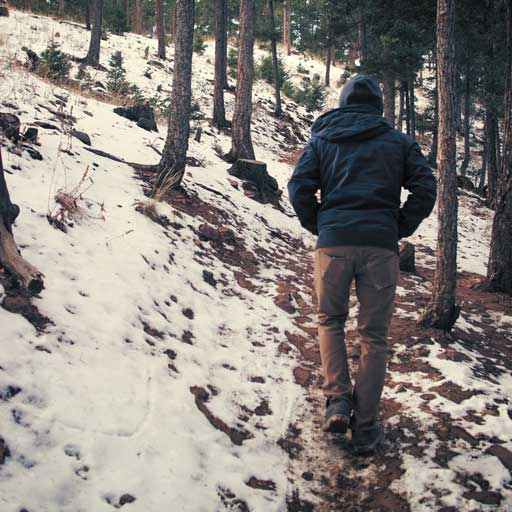As an Amazon Associate we earn from qualifying purchases.
 Kukris are one of the favorite knives for chopping and slashing. The process of maintaining them is a bit tricky as it is made of an inwardly curved special blade which is the main distinction with other blades. So, how to sharpen a kukri? That is where this article comes into play.
Kukris are one of the favorite knives for chopping and slashing. The process of maintaining them is a bit tricky as it is made of an inwardly curved special blade which is the main distinction with other blades. So, how to sharpen a kukri? That is where this article comes into play.
The kukri knives or machetes are a multipurpose tool. You can use it as a smaller knife by using the narrower part of the blade, nearby to the handle. The heavier and wider end towards the tip functions as an ax or a small shovel. It has various uses i.e. clearing, chopping, digging for camping, slaughtering animals, cutting vegetables, skinning animals, hiking, camping, survival, and opening cans.
How to Sharpen a Kukri?
Let’s discuss the ways of sharpening a curved blade like the kukri and how to maintain it.
Techniques for Sharpening Kukris
Kukri sharpening process needs some special care because of its curved shape. Different techniques are used for sharpening it which are widely used by the users. Some prominent techniques are discussed here.
Sharpening by Chakmak
Sometimes kukris may come with two accompanying small knives on its back of the sheath to make the set complete. The small knife with the sharp edge is called Karda which is a small utility knife used for skinning purposes or as paper-knife tasks where the kukri can’t perform. The second one accompanying with Karda is the Chakmak or the sharpener.
Do you know, how to sharpen a kukri with a Chakmak? Here the process is briefly discussed.
Kukri sharpening by Chakmak is the most traditional way. To sharpen the kukri, hold the knife handle firmly with your off-hand at a small angle. With your first-hand, apply adequate pressure to the kukri as you move the Chakmak from the tip to the notch. Flip your knife and repeat the process on the other side of the blade. Wrap the sandpaper around the eraser and use it for quick touch-ups after you have aligned the edge with the Chakmak. For better sharpening, you have to maintain a certain rhythm to the action throughout the process. Hope, you’ve done it nicely!
Rada Quick Edge Method
Rada is dual steel wheels by which you can sharpen your kukri quickly and efficiently. It is easy to use and maintain. When you pull your kukri between the wheels four to six times, it gives you a great edge of both sides at a short time. The blade will now be as sharpened as when it left the manufacturer!
Stone or Puck Technique
Different stones or pucks are available to sharpen blades. Different techniques are required for the concave and end sections of the blade. Rub the stone nicely back and forward along either side of the blade keeping a consistent angle for the concave section of the kukri. If it’s a puck, execute the action with the smaller, angled surface. Use the flat surface of the stone or puck, rubbing the blade in a circular motion for the end section of the kukri. This is better for sharpening blades that are blunt.
Honing Steel Method
Honing steel, sometimes referred to as sharpening steel, whet steel, sharpening rod, sharpening stick, butcher’s steel, and chef’s steel. This is flat, oval, or round in cross-section and up to 1-foot long. It works the same way as the Chakmak. Before sharpening your kukri stand it on a wooden surface, then start at the tip and work the steel up to the top. In this process, less pressure is required on the blade compared to Chakamak.
Sharpening A Dull Kukri
Is your kukri totally dull? Then you can’t sharpen it by using Chakmak, honing steel, Rada or a stone or puck. In this case, use a fine to a medium metal file on the kukri to gain a minimum sharpness. Sharpen the blade by scrubbing the metal file back and forward. Ensure a steeper angle on the concave section of the kukri and a lesser angle on the heavier end. If you feel the kukri has gained some sharpness, then use a Chakmak, honing steel, or a stone or puck to fulfill the job.
Safety & Maintenance
- Use hand gloves and sunglass during the sharpening process
- Be careful while sharpening
- Use kerosene or turpentine and a cloth to clean and remove rust
- Keep it on sheath while not use
- Do not keep the kukri blade wet for too long
Conclusion
Kukri is a nice survival tool but can be very dangerous blade when not maintained correctly. The sharpening methods discussed here depends fully on user preferences. Either you choose Chakmak, rada, stone or puck, honing steel all methods work nicely or can simply avail electric sharpeners if you have enough budget. To sharpen a kukri, you need not be an expert but always be careful while sharpening. Kukri can be a great assistant in hunting. A good hunting knife sharpener is a must-have too. Hope, this guideline will help you to keep your edge sharpened!
Amazon and the Amazon logo are trademarks of Amazon.com, Inc, or its affiliates.

Danny is an avid hunter and outdoorsman who just love the wilderness. He learned the surviving techniques from his predecessors and became the skilled man of today. He is a family guy who loves his family dearly. From an early age, he became very fascinated with different survival tools among which machete was one of them. This website is for sharing his knowledge and skills for those who feel a close bond with nature just like him.
Leave a Reply